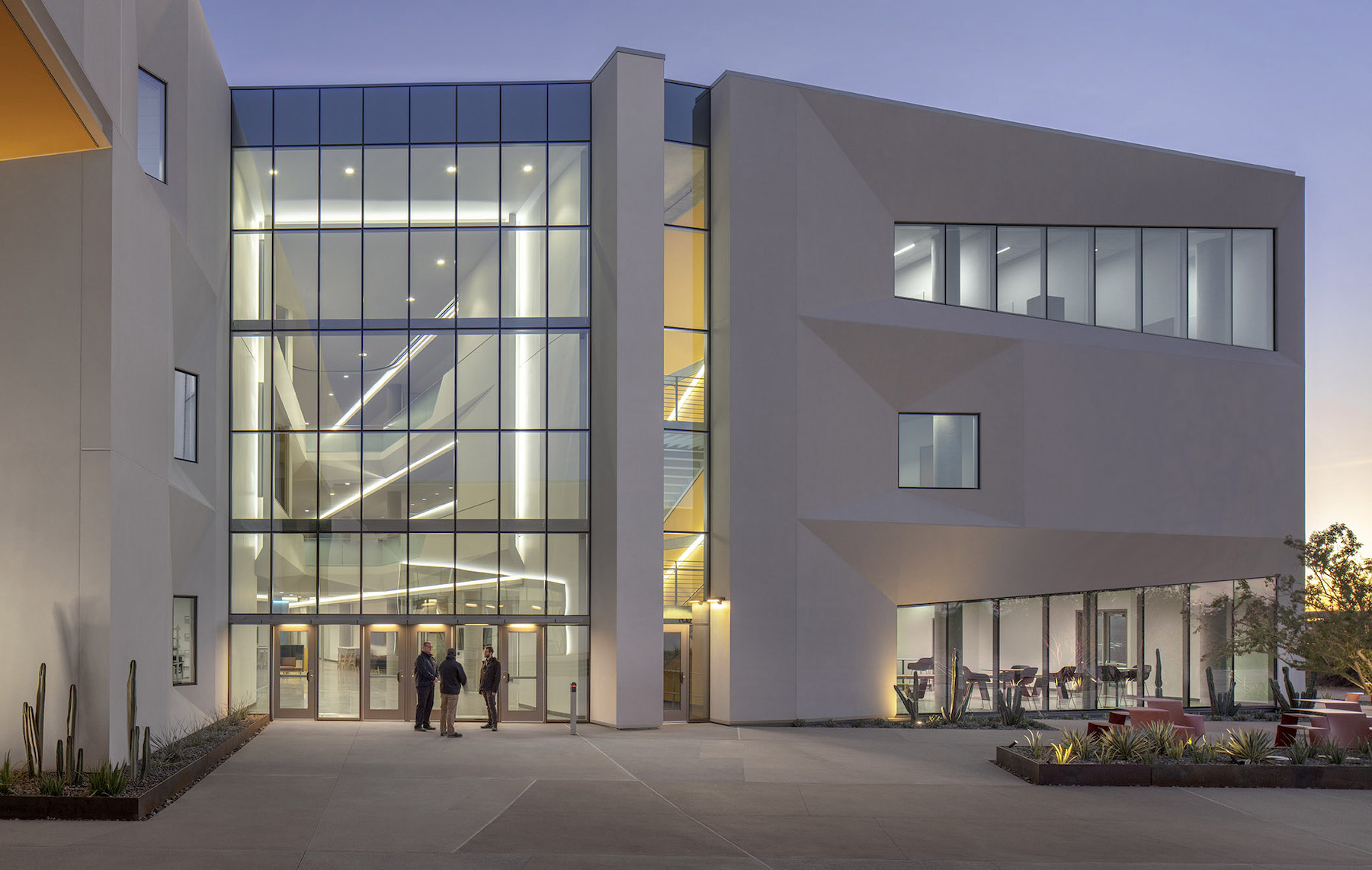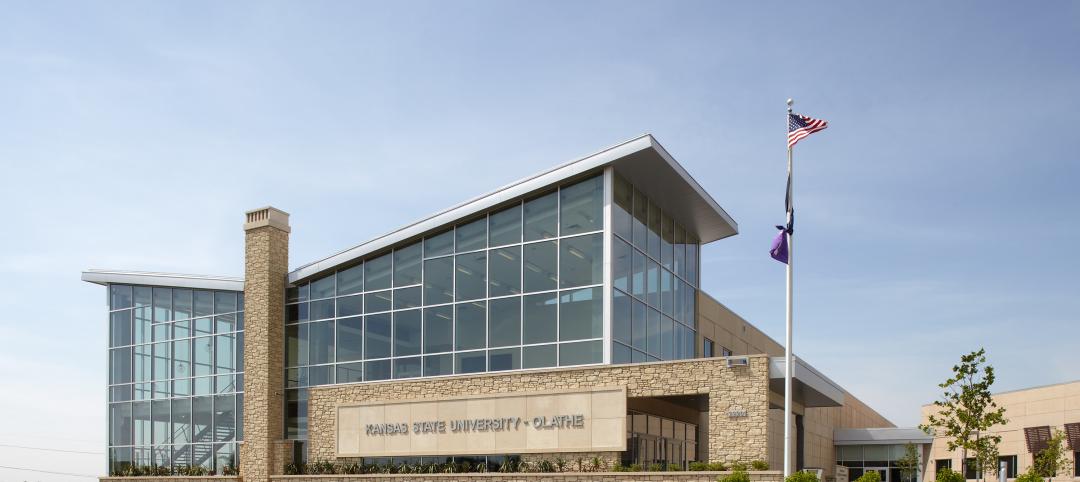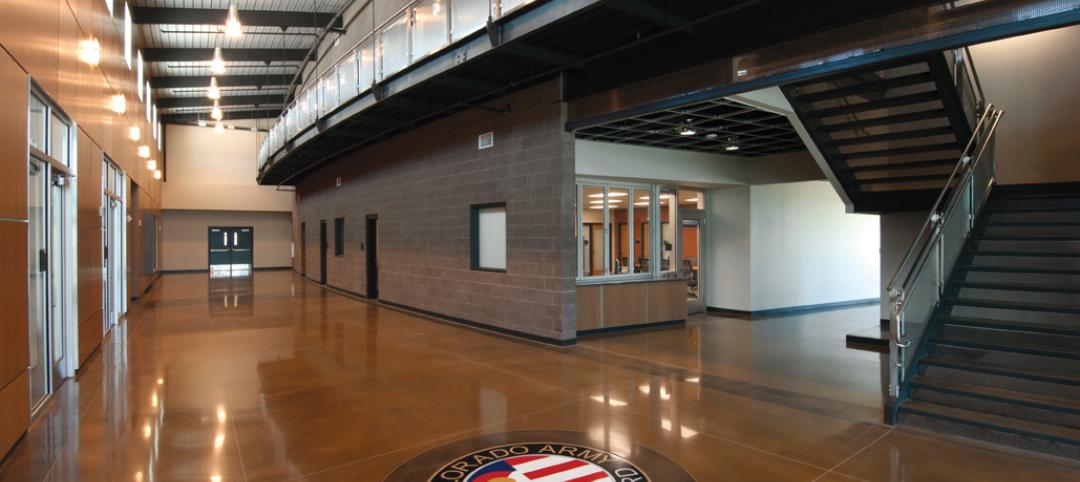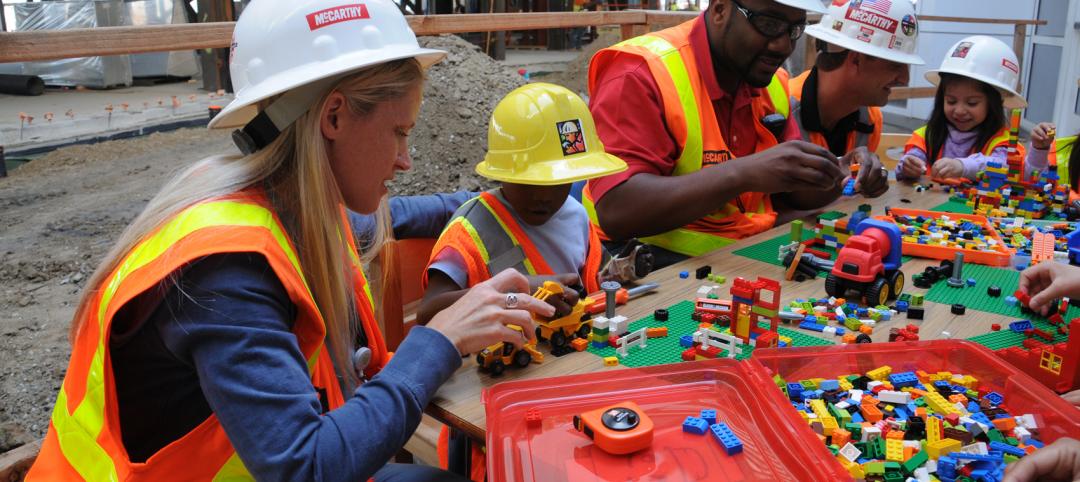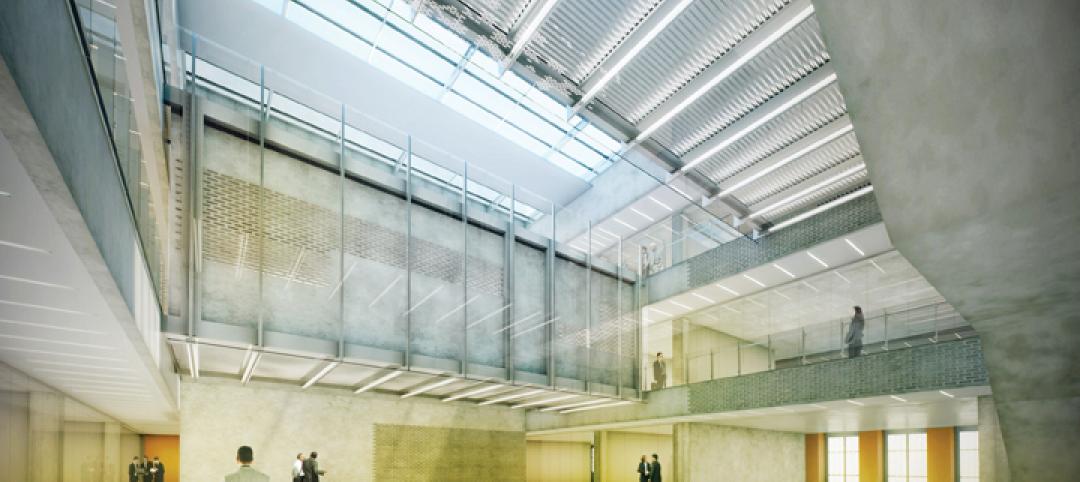In Phoenix, the Arizona State University (ASU) has constructed its Health Futures Center—expanding the school’s impact as a research institution emphasizing medical technology acceleration and innovation, entrepreneurship, and healthcare education.
Designed by CO Architects in collaboration with DFDG Architecture, the ASU Health Futures Center is a multidisciplinary home for medical tech innovation, research, education, and conferencing. CO designed the building to allow spaces to function in multiple ways, encouraging interdisciplinary collaborations. It’s located on a newly developed site for the university’s growing biotech presence near the Mayo Clinic Phoenix.
The Health Futures Center is the first building to be constructed as part of the almost 20-year Mayo Clinic-Arizona State University Alliance for Health Care collaboration. CO master-planned the new 24-acre campus on previously undeveloped desert land, then programmed and designed the three-story facility for ASU’s College of Health Solutions, College of Nursing and Health Innovation, and Ira A. Fulton Schools of Engineering, as well as shared programs with Mayo Clinic.
The $80 million, 145,200-square-foot building includes research laboratories, simulation suites, workspaces, and instructional rooms. The light ecru exterior was designed for the desert heat, with windows angled to face northward on both the east and west facades, minimizing solar heat gain. The center offers views of the McDowell Mountains to the east and central Phoenix to the south.
The building’s conference center features a double-height auditorium with 278 fixed seats arranged in a circular configuration, with the capacity for up to 320 in an in-the-round configuration. Audio, video, and lighting elements allow patrons to view dynamic visual presentations from wherever they’re seated.
On the building team:
Owner: Arizona State University
Design architect: CO Architects
Architect of record and executive architect: DFDG Architecture
MEP engineer: Affiliated Engineers (AEI)
Structural engineer: Advances Structural Engineering
General contractor/construction manager: DPR Construction
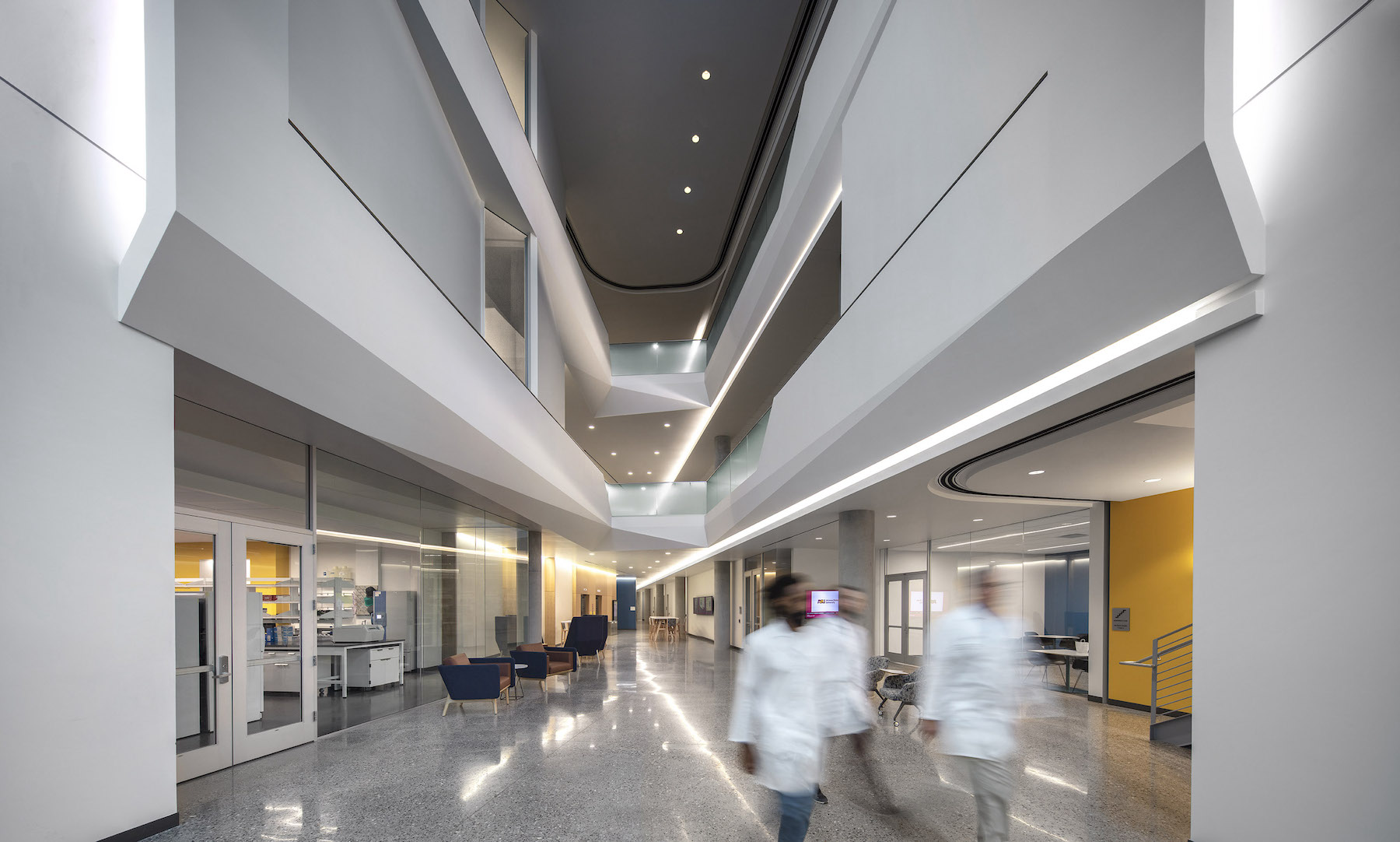
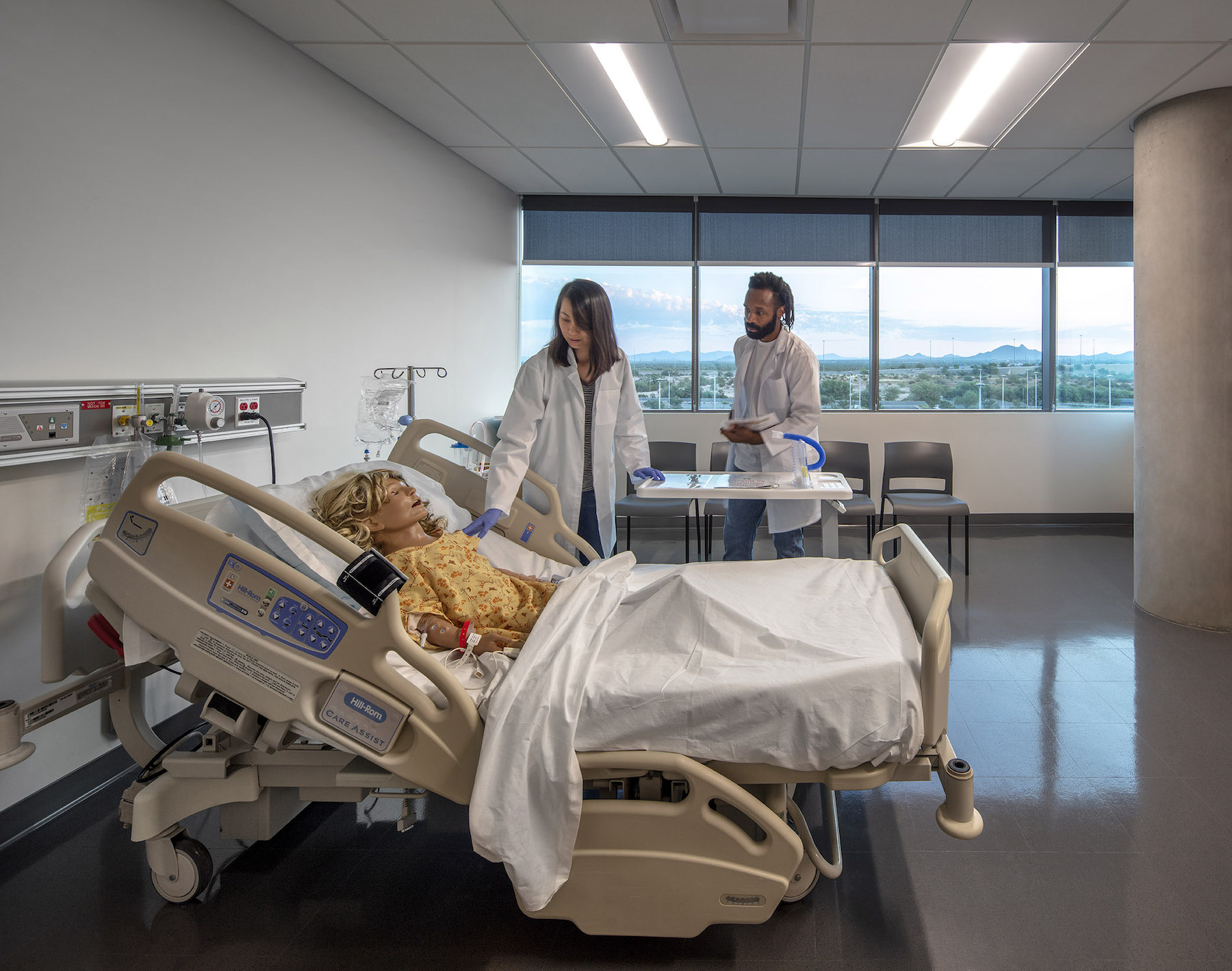
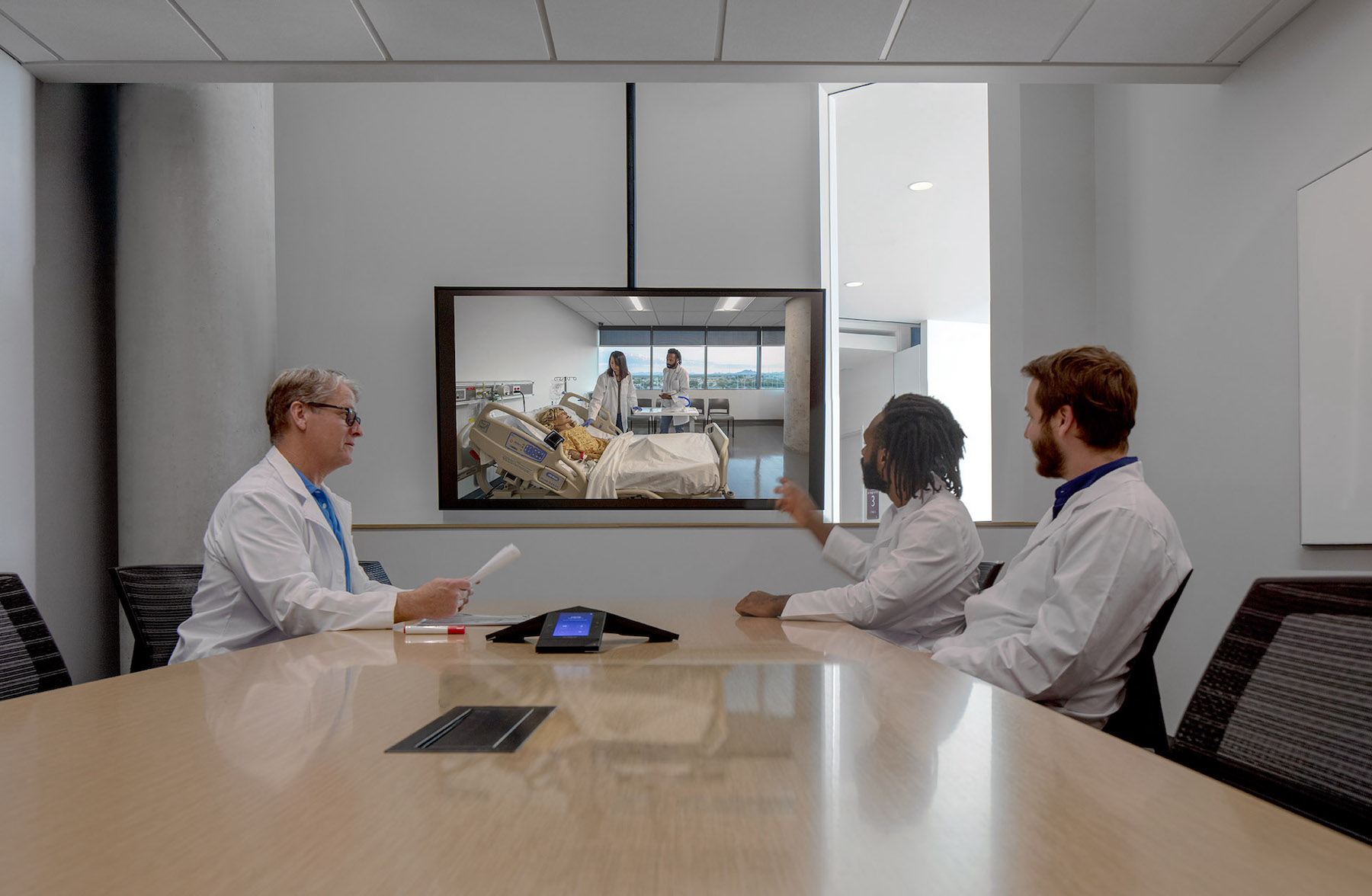
Related Stories
| Jun 1, 2012
K-State Olathe Innovation Campus receives LEED Silver
Aspects of the design included a curtain wall and punched openings allowing natural light deep into the building, regional materials were used, which minimized the need for heavy hauling, and much of the final material included pre and post-consumer recycled content.
| May 31, 2012
5 military construction trends
Defense spending may be down somewhat, but there’s still plenty of project dollars out there if you know where to look.
| May 29, 2012
Torrance Memorial Medical Center’s pediatric burn patients create their version of new Patient Tower using Legos
McCarthy workers joined the patients, donning construction gear and hard hats, to help with their building efforts.
| May 29, 2012
Reconstruction Awards Entry Information
Download a PDF of the Entry Information at the bottom of this page.
| May 24, 2012
2012 Reconstruction Awards Entry Form
Download a PDF of the Entry Form at the bottom of this page.
| May 23, 2012
New hospitals invest in data centers to manage growth in patient info
Silver Cross became one of the first hospitals to install patient tracking software so families know where a patient is at all times. New communication equipment supports wireless voice and data networks throughout the hospital, providing access to patients and their families while freeing clinicians to use phones and computers where needed instead of based on location.
| May 22, 2012
Batson-Cook names Partin VP of Business Development
Partin joins general contractor from Georgia Hospital Association.
| May 16, 2012
Balfour Beatty Construction taps Kiger as VP of operations
Kiger will manage current relationships and pursue other strategic clients, including select healthcare clients and strategic project pursuits in the Central Tennessee region.
| May 7, 2012
4 more trends in higher-education facilities
Our series on college buildings continues with a look at new classroom designs, flexible space, collaboration areas, and the evolving role of the university library.
| May 7, 2012
2012 BUILDING TEAM AWARDS: Fort Belvoir Community Hospital
A new military hospital invokes evidence-based design to create a LEED-certified facility for the nation’s soldiers and their families.


